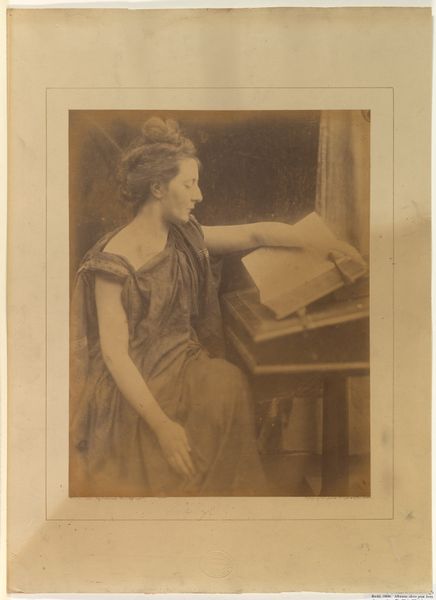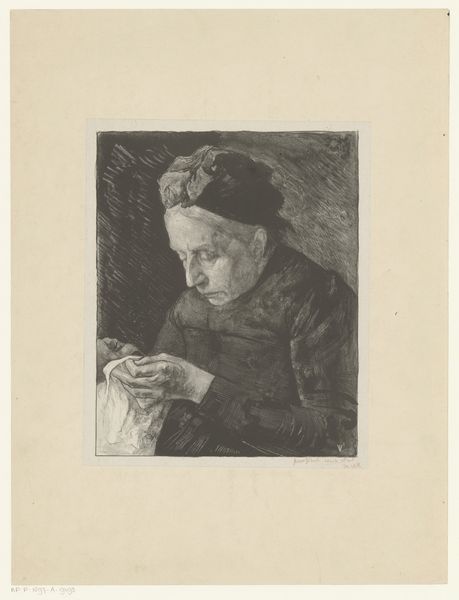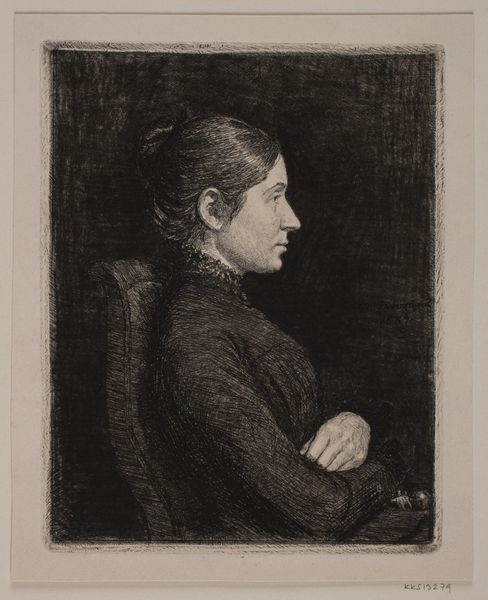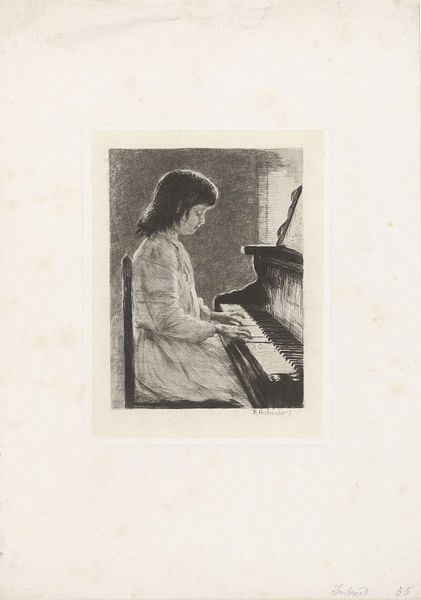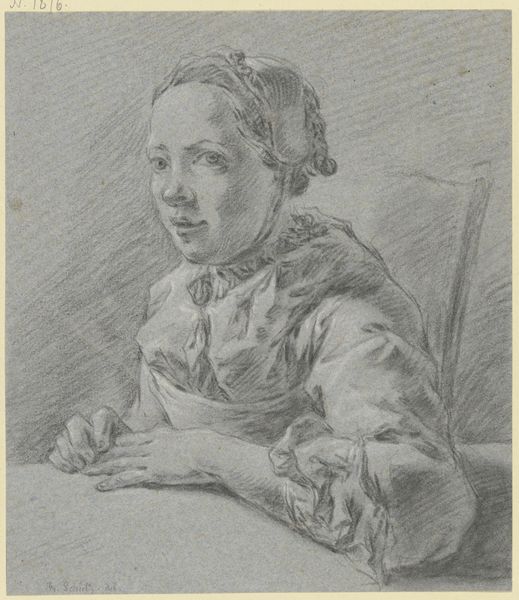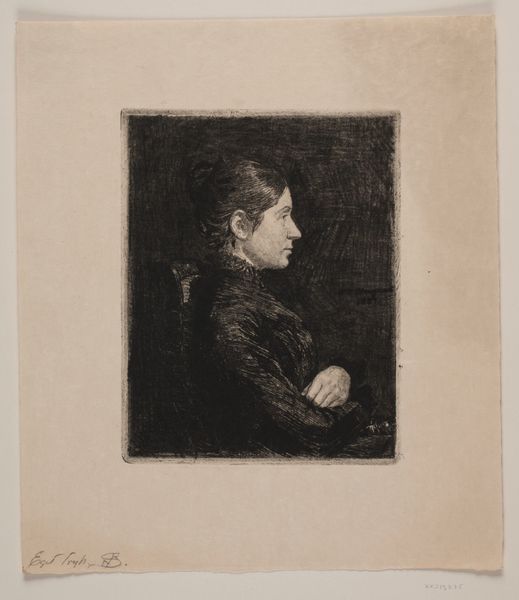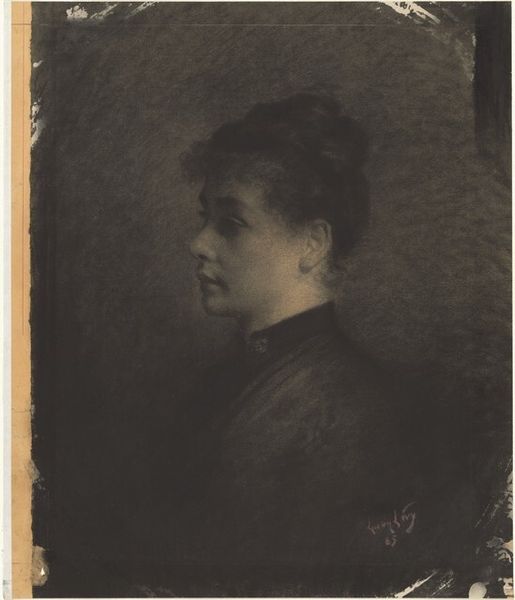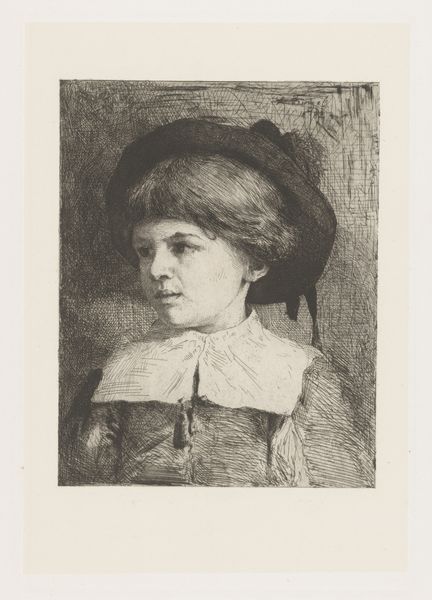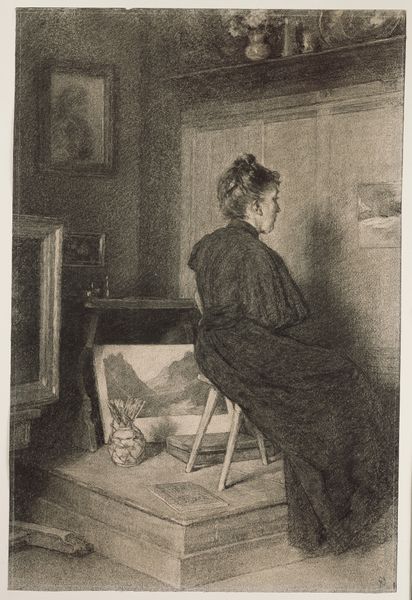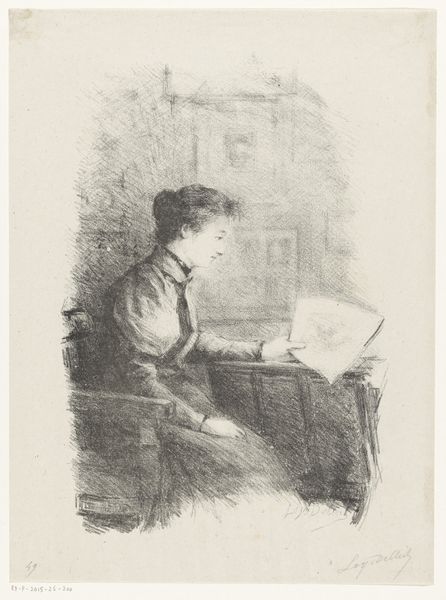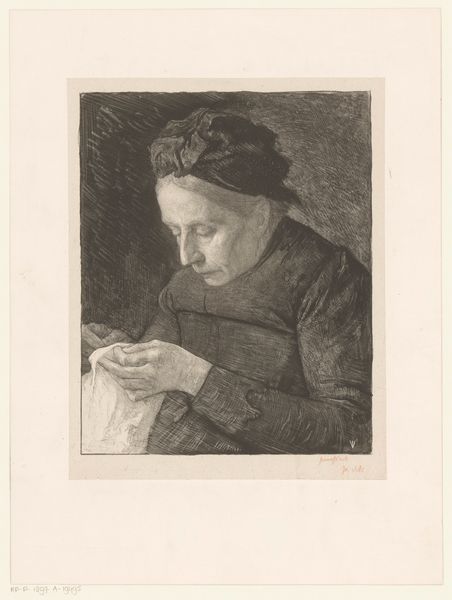
drawing, paper
#
portrait
#
drawing
#
16_19th-century
#
paper
#
historical photography
#
photo layout
#
realism
Dimensions: height 256 mm, width 216 mm
Copyright: Rijks Museum: Open Domain
Curator: Looking at Jan Veth's 1891 drawing, "Portrait of Agneta Matthes," currently residing here at the Rijksmuseum, I'm struck by its somber stillness. Agneta is seated at a piano, and her gaze is intensely focused—though on what, we can only guess. What's your initial reaction? Editor: My first impression is one of quietude, but also a slight discomfort. The soft greys of the drawing contribute to the peace, yet Agneta's expression—almost severe—suggests a tense atmosphere, like a pregnant pause in music. Curator: Indeed. Veth was quite a celebrated portraitist, capturing the spirit of the Dutch elite. What fascinates me here is that Agneta Matthes was a prominent figure herself, a philanthropist. And the setting suggests refined tastes and elevated social standing, which Veth clearly aimed to convey, wouldn't you say? Editor: Certainly. Veth's work exists in a moment where artistic style intersects with emerging bourgeois cultural power. The very act of sitting for a portrait speaks volumes about class and the social display of achievement. But tell me, the angle, the focus on her expression... what do you think he was really trying to reveal? Curator: Ah, the eternal question of portraiture! I sense a complex dynamic. He's not simply presenting her beauty; instead, Veth probes her inner life. There's intelligence there, perhaps a weariness, which I see translated onto the keys as if they could be her own weight and purpose. She is a player of sorts, on an entirely grander stage than the window reveals to us. Editor: And consider how that realism operates politically. The wealthy in the late 19th century were keen to soften images of vast fortunes; thus portraits become stages on which to signal responsibility, taste, and a sensitivity to match their cultural power. Jan Veth's ability to convey not just likeness, but 'goodness', was vital to his career. Curator: A masterful demonstration of power—both the subject's and the artist's. Looking at the drawing now, understanding its historical position, enriches its layers. Thanks for lending your perspective! Editor: Absolutely. These portraits always have so much to reveal, once we start tuning in to their particular period's frequency.
Comments
No comments
Be the first to comment and join the conversation on the ultimate creative platform.
